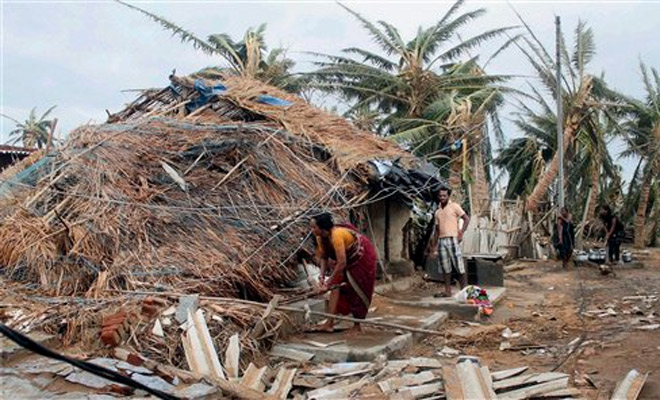Bhubaneswar: People living in the coastal belt of Bay of Bengal – the eastern stretch of India — have seen some of the most devastating disasters in the country. The Super Cyclone in 1999 has been so far the most devastating one in which 10,000 people lost their lives.
In 2013, Cyclone Phailin ravaged Odisha claiming 44 lives. The recent 2018 Cyclone Titli claimed 77 lives in Odisha and caused widespread destruction of property and livelihoods.
In this background, People’s Solidarity Forum, a state level body of the people’s organizations from 14 districts of Odisha — Gajapati, Ganjam, Jagatsinghpur, Bolangir, Nuapada, Puri, Khurda, Balasore, Bhadrak, Mayurbhanj, Sundargarh, Kandhamal, Rayagada, Nayagarh — which were affected by various kinds of disasters throughout the year have come together recently and discussed the issues that are most common to all of them.
Their united effort is to release of a manifesto on Disaster Response and Mitigation incorporating various suggestions for disaster risk reduction on long term basis.
Also, there was a presentation of the findings of the citizens’ report which was compiled after Titli cyclone in consultation with different categories population and stakeholders.
While sharing the key findings of the report, Priyabrata Satapathy, development researcher, said that there was no clear line of communication and coordination among the various state agencies involved in the search and rescue operations of Cyclone Titli.
The most vulnerable groups like differently- abled people, women, aged people and destitutes who were differently affected by the cyclone have not been provided with special support which is extremely distressing. Large sections of farmer communities are farming on forest lands but their rights have not been recognised under FRA and they have been excluded from getting compensation for the loss they suffered in forest land.
Regional Manager, ActionAid, Debabrat Patra said that the government should undertake the disaster preparedness and risk reduction work both in coastal and non-coastal areas. Mapping of vulnerable population like women, aged persons, differently- abled people, children and pregnant women is vital for effective disaster risk reduction.
Prioritization needs to be done accordingly; whom we should rescue first and support their specific needs. People’s involvement in the disaster preparedness committees, linkage with social security and promotion of climate resilient traditional agriculture for sustainable livelihoods are some of the important areas on which the government should focus on long term basis as part of the disaster risk reduction efforts.
There was demand that the state government should focus on rescue for vulnerable sections of society as these sections suffer more during disasters. This is in line with the Section 8 (1to4) of the Rights of Persons with Disabilities Act, 2016.
The state government should focus on fast and prompt rehabilitation process through a single window (within 6 months) fast track system. This step will prevent the tremendous distress and the resultant forced migration among disaster survivors.



